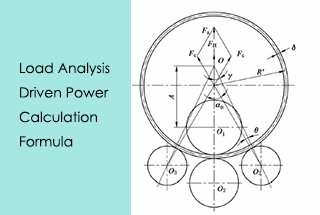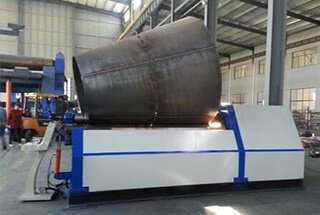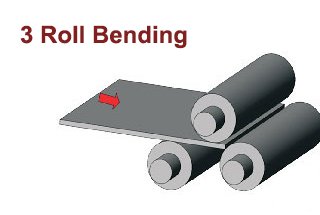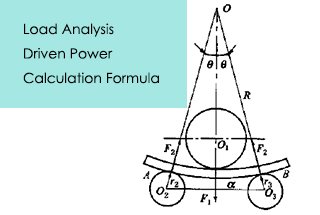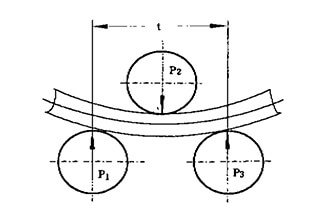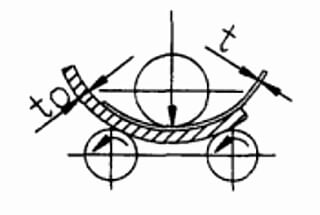
Have you ever wondered how a four-roller plate bending machine achieves such precise curves? This article explores the calculation of side roll position shifts, guided by an experienced mechanical engineer. Discover the key principles and techniques that make this machinery marvel possible.
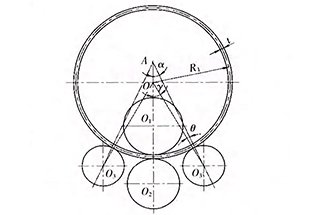
According to the three-point bending principle, plate bending machines utilize the rotary motion and relative position changes of work rolls to achieve continuous elastic-plastic deformation. This process enables the formation of metal sheets into predetermined shapes such as cylinders, arcs, and precision workpieces.
Plate bending machines find widespread application across various industries, including boiler manufacturing, shipbuilding, petrochemicals, metal structures, and sheet metal forming machinery.
Based on roll configuration, plate bending machines are classified into two-roll, three-roll, and four-roll types, each offering distinct operational characteristics and capabilities.
Compared to traditional two-roll designs, four-roll plate bending machines offer several advantages, including improved workpiece centering, reduced residual straight edges, enhanced circular profile accuracy, and increased production efficiency.
Furthermore, four-roll plate bending machines can perform plate end pre-bending and continuous workpiece rolling without the need for flipping, making them increasingly valuable in advanced sheet metal forming operations.
The machine typically comprises an upper roll, a lower roll, and two side rolls (front and rear). The upper roll rotates at a fixed position, feeding the steel plate through friction. The clamping, pre-bending, and rolling processes are controlled by precisely adjusting the positions of the lower roll and the two side rolls.
To optimize rolling accuracy, it is crucial to determine the exact positions of the lower roll and side rolls. Traditionally, operators rely on experience and iterative adjustments to control these components, monitoring rolling accuracy through continuous comparisons and model checking. This approach often results in suboptimal accuracy and efficiency.
This article presents a novel calculation formula for springback curvature radius based on elastic recovery theory and investigates the optimal positioning requirements for the lower and side rolls during the steel plate rolling process. A comprehensive mathematical model is established to calculate the precise positions of these components during alignment, pre-bending, and bending operations.
The study accurately determines the required displacements of the lower roll and the front and rear side rolls throughout the steel plate rolling process, providing precise feed data for digital control systems. Production trials have verified the consistency of this method with practical applications, demonstrating significant improvements in rolling accuracy and operational efficiency.
The four-roll plate bending machine comprises several critical components, each contributing to its precise and efficient operation. These include the upper roll assembly, lower roll assembly, side roll mechanisms, overturning system, low and high racks, base structure, and hydraulic power unit.
The upper roll functions as the primary driving element, powered by a high-precision servo motor through an optimized transmission system. Its position remains fixed during operation, ensuring consistent force application. The lower and side rolls act as driven components, their rotation facilitated by frictional engagement with the steel plate being formed.
The lower roll is mounted in a specially designed bearing seat, which allows for vertical adjustment within a precision-machined sliding guide groove integrated into the frame. This feature enables the machine to accommodate a wide range of plate thicknesses, enhancing its versatility in various manufacturing scenarios.
The side rolls are installed in dedicated bearing seats, crucial for maintaining proper alignment and pressure distribution during the bending process. To achieve the desired cylindrical curvature with high accuracy, the side roll bearing seats are engineered to move along an inclined path within their respective sliding guide grooves. This inclined movement, set at a specific angle relative to the vertical axis, allows for fine-tuning of the bending radius and ensures uniform curvature along the entire length of the workpiece.
The machine’s adaptability is further enhanced by its hydraulic cylinder-controlled overturning and reset mechanisms for the lower, side, and upper rolls. This feature facilitates easy loading, unloading, and adjustment of workpieces, significantly improving operational efficiency and reducing cycle times.
Figure 1 provides a comprehensive visual representation of the equipment’s overall structure, illustrating the intricate interplay between its various components and systems. This integrated design approach ensures optimal performance, precision, and reliability in metal forming operations.
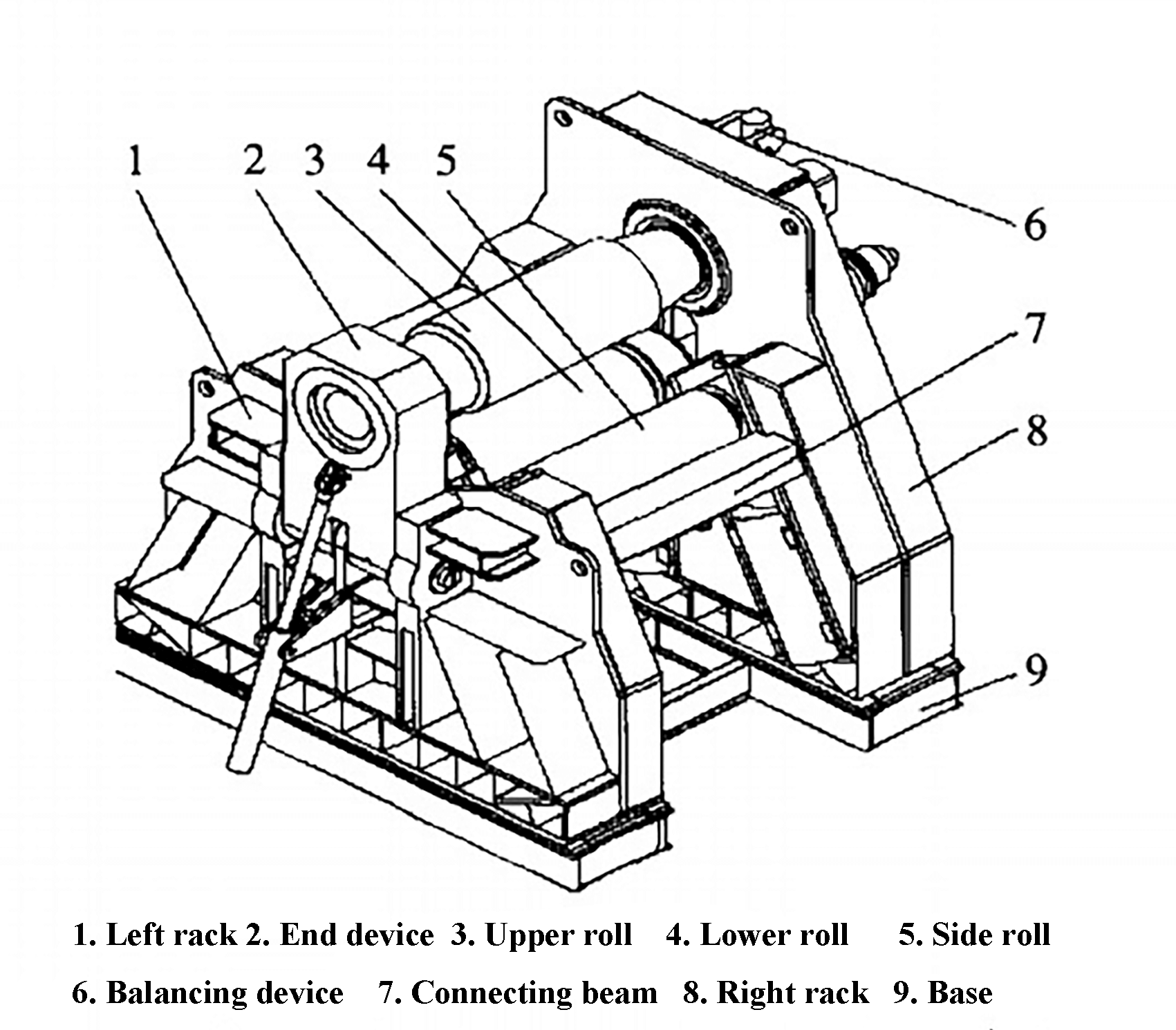
The process of rolling steel plate typically consists of six steps, including preparation, feeding, prebending, prebending on the other side, rolling forming, and arc correction. This process is depicted in Figure 2.

1.2.1 Preparation and feeding
The lower roll is lifted to a position where the distance between the upper generating line and the lower generating line of the upper roll is slightly greater than the thickness of the workpiece.
The rear side roll is lifted to a position where the upper generatrix and the upper generatrix of the lower roll are in the same horizontal plane, and then the front side roll is lifted to a position where its center line is located between the upper and lower rolls (as shown in Figure 2a).
The workpiece is fed horizontally between the upper and lower rolls, with the front end pressing against the front roll. The lower roll is then raised to clamp the steel plate (as shown in Figure 2b).
With these steps completed, the preparation and feeding process is finished.
1.2.2 Prebending
The front side roll is returned to its original position and the rear side roll is raised to the process height for the prebending curvature of the steel plate (as shown in Figure 2c).
The upper roll rotates counterclockwise to drive the steel plate forward. When the end of the steel plate reaches half the distance between the two rollers, it should be measured to ensure it reaches the required curvature.
The process for prebending the other end is similar to what has been described above.
1.2.3 Roll bending
The front side roll is raised to the process height for the required curvature, while the rear side roll is lowered so that both front and rear side rolls are at the same level.
The upper roll rotates counterclockwise to drive the movement of the steel plate forward, causing it to curl. At the same time, the curvature of the protruding steel plate is measured using a template, and the process height is adjusted as necessary to achieve the desired radian (as shown in Figure 2d).
The arc correction process is similar to the roll bending process.
Currently, the majority of coils are produced through cold rolling. The springback phenomenon is quite pronounced in this process, so an adequate amount of overwinding is required to compensate for it.
Typically, the springback radius should be less than the desired radius of the parts (pre-bending radius).
Based on elastic-plastic mechanics, the springback in sheet metal processing is influenced by factors such as the elastic modulus, strengthened elastic modulus, yield limit, pre-coiling radius, and sheet thickness.
Through theoretical derivation, the calculation formula for the radius of curvature before recovery can be determined as follows:

In the formula:
The analysis of the steel plate rolling process reveals that the position of the upper roll remains unchanged during rolling and that the rolling is mainly accomplished through the vertical movement of the lower roll and the angled feed of the two side rolls.
Therefore, the accurate rolling of the steel plate can be achieved by precisely controlling the position of each roller during the process.
The following focuses on the mathematical modeling and calculation of the process positions of the lower roll and side rolls during the key processes such as forward movement, prebending, and coiling.
The calculation takes into account factors such as the rolling machine’s geometric parameters, the material and thickness of the rolled steel plate, and the rolling radius.
The following symbols are typically used to derive the displacement formula for the back roll and both sides of the plate bending machine:
During the alignment process of the plate bending machine, as depicted in Figure 2, the lower roll and both side rolls undergo corresponding displacement. The process position of each roller during alignment is depicted in Figure 3.

The displacement of the two side rolls and the lower roll can be calculated based on the geometric relationship, as follows:

During the prebending process of the bending machine, as shown in Figure 2, the lower roll and front and rear rolls undergo corresponding displacement.
To meet the requirements of the prebending process, the process position of each roll during left prebending is shown in Figure 4. During right prebending, the positions of the front and rear rolls are simply swapped, while the position of the lower roll remains unchanged.
The value of the geometric parameter B can be calculated using the calculation formula for the asymmetric three-roll plate bending machine. In this article, B is taken to be equal to 2t.

Suppose “O” is the center of curvature prior to springback, “y” represents the angle between the upper roll center and the bending center line “OO1” and the angle between the lower roll center and the bending center line “OO2.”
The angle “φ” represents the angle between the line “O1O2” between the upper roll center and the lower roll center, and the line between the upper roll center and the bending center.
The angle “θ” represents the angle between the line “AO3” between the center of the bending machine and the center of the side roll, and the line “OO3” between the center of the side roll and the bending center.
Based on these geometric relationships, the following conclusion can be drawn:
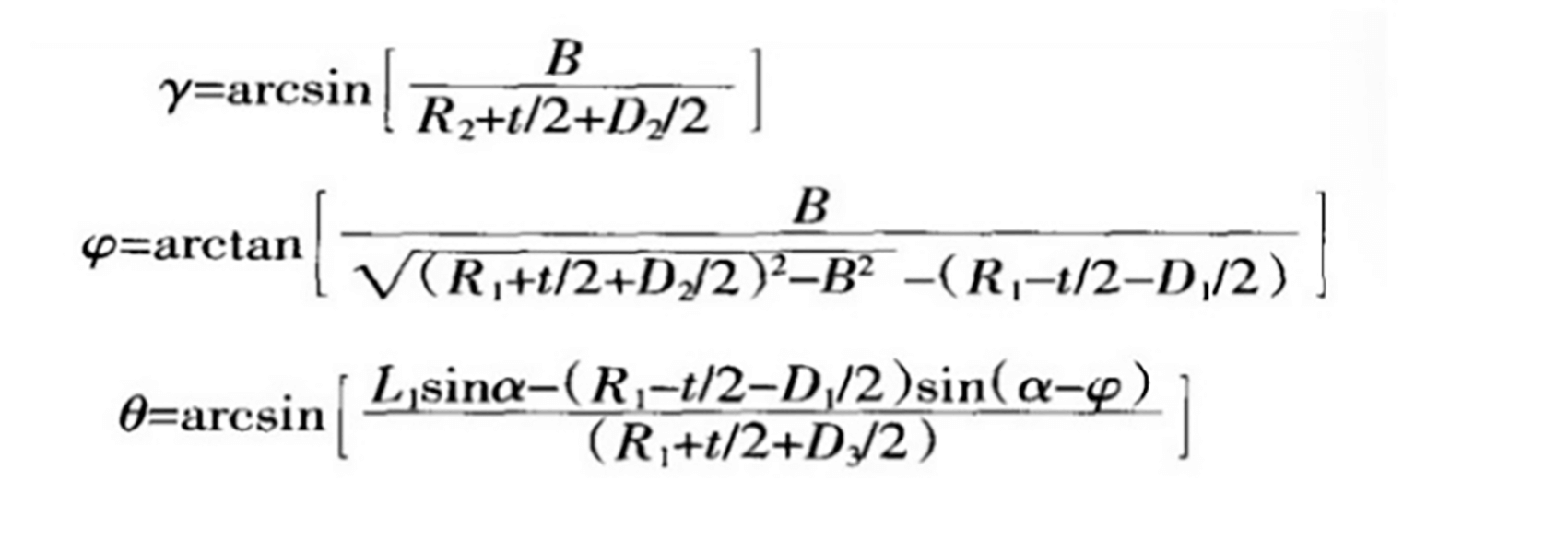
In the formula, the geometric parameter B is the value from the center of lower roll O2 to OO1, which can be calculated according to the formula of the asymmetric three-roll plate bending machine.
In this article, B = 2t, and other parameters are the same as the above.
Suppose that F is the intersection of OO2 and AO3, and β is the angle between F and the middle line of upper and lower rolls.

In △ AFO2, according to the sine theorem:

Thus:

Similarly, in △ AFO2:

Thus:

In △ AFO2:

Thus:

That is:

Therefore, the displacement between the two side rolls and the lower roll is:
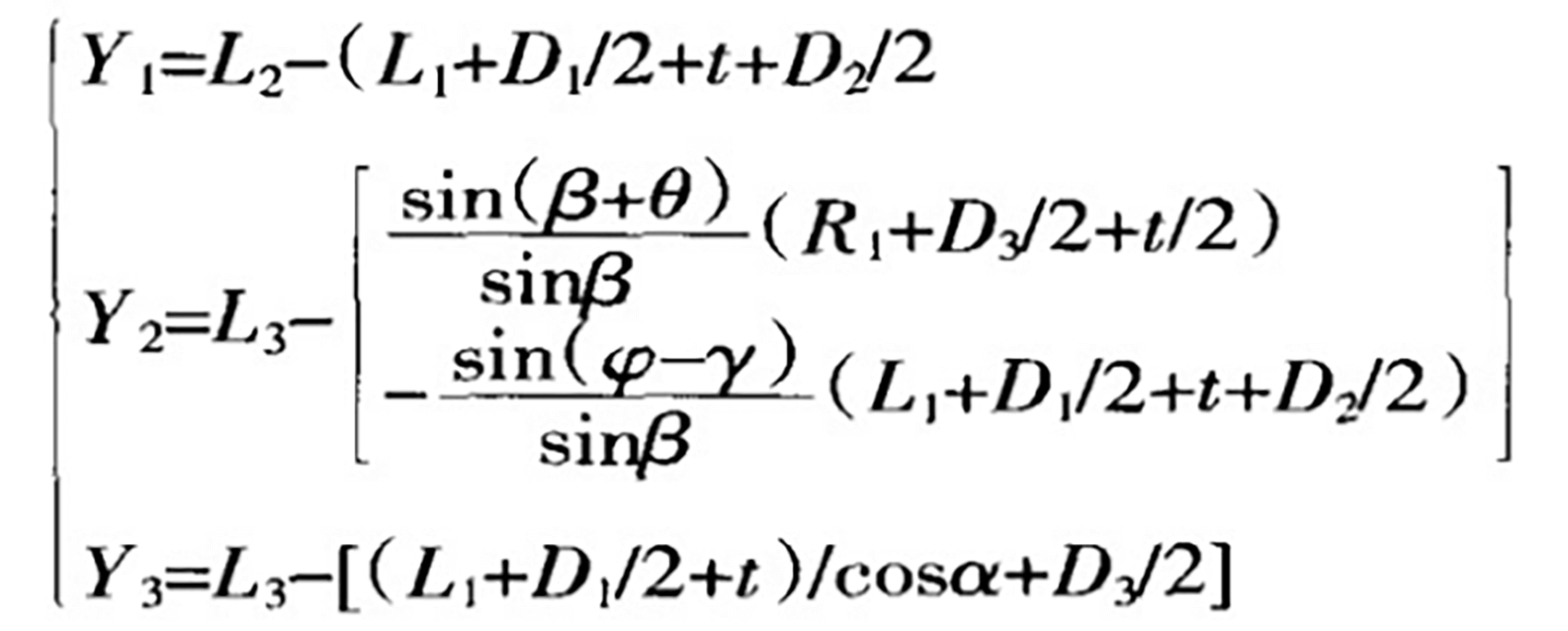
When the right side is prebending, Y1 remains unchanged, Y2 and Y3 can be interchanged.
In the continuous bending process of the plate bending machine depicted in Figure 2, the two side rolls are positioned symmetrically, and the lower roll and the front and rear side rolls have corresponding displacements.
To meet the requirements of the continuous bending process, the position of each roller during the process is displayed in Figure 5.

According to the geometric relation, in △OAO3, from the sine theorem:

Thus:

Suppose that O is the center of curvature before springback, λ is the angle between OO2 and OO3, then:

In △OAO3:

Thus:

If Y1 remains unchanged, Y2=Y3=L3-AO3, so the displacement of the rollers on both sides and the lower roller is:

An experimental study was conducted using a W1220 x 2500 plate rolling machine, with a 10 mm thick plate made of Q235 material and a rolling radius of 700 mm.
The results of the experiment showed that there was an absolute error of 4.8mm between the actual circle radius and the required circle radius, resulting in a relative error of 0.68%. Based on these results, it was determined that the correction was sufficient to meet the accuracy requirements.
Upon analyzing the test data from multiple attempts to adjust the springback radius, it was found that the primary cause of error was the assumption that the plate was undergoing pure bending during the calculation of the springback radius, and not taking into account the impact of extrusion force and friction.
However, the technical analysis showed that the displacement calculation was accurate and met the requirements of the process.
This article presents an analysis of the rolling process of a four-roll plate rolling machine. By combining the calculation formula for the springback radius with mathematical and mechanical methods, the article analyzes the position of each roller during the machine’s working process.
The results of the calculation were tested on a four-roll plate bending machine.
The results of the experiment showed that this method can significantly reduce the number of tests and improve the accuracy and efficiency of the rolling process.

